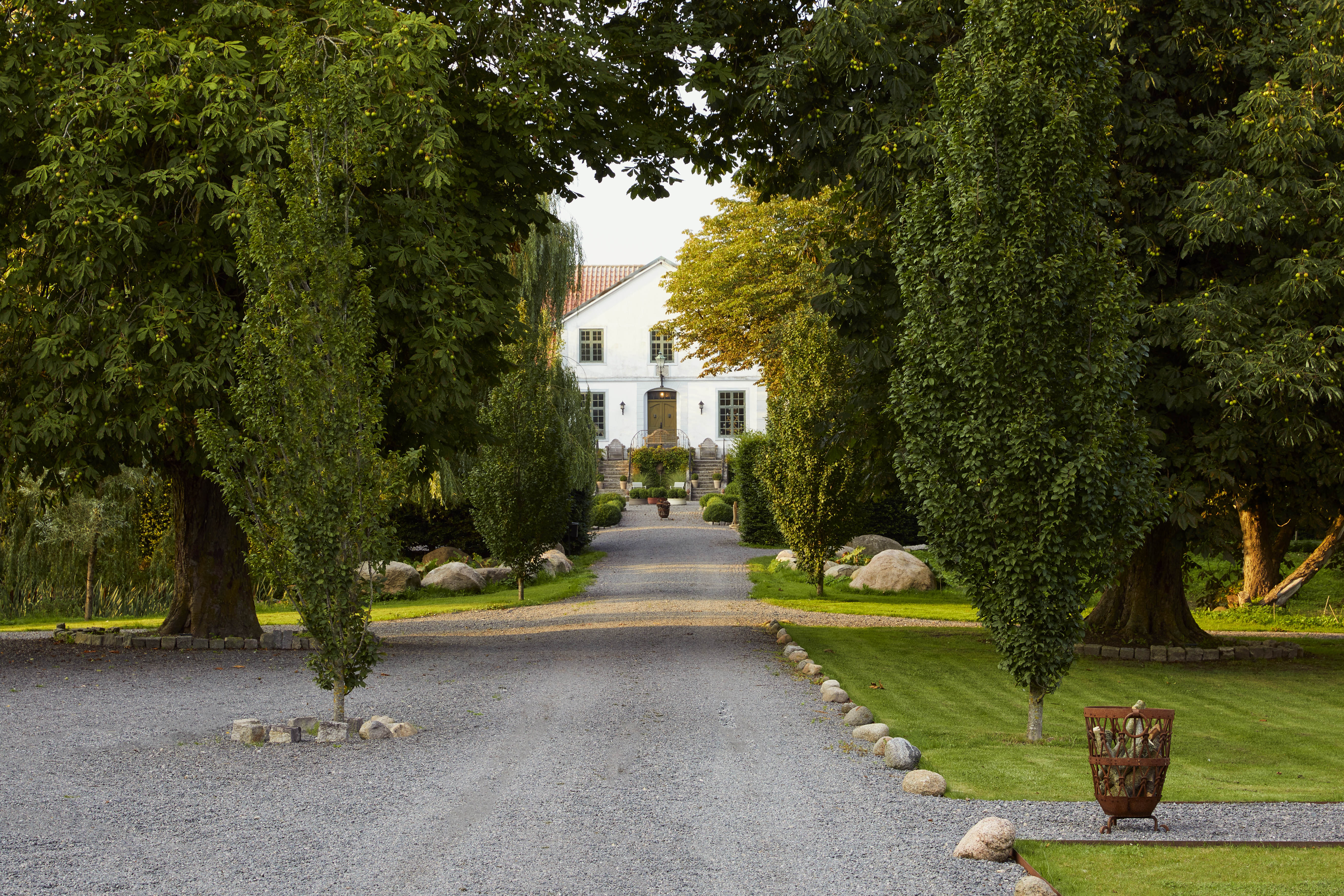Photography by Elsa Young
As far as castles go, the 17th-century estate of Kåseholm in Sweden’s Skåne province specialises in the art of the slow reveal. The moment our car turns into the driveway and I catch sight of the intriguing neo-classical building in the distance, I am enthralled. More so, as the long driveway takes us past pastures where Gotland sheep are grazing and meticulously renovated farm buildings and barns give way to a contemporary landscape of box-hedge borders, ornamental plantings and large stone sculptures.
At the entrance, a double-armed, sweeping staircase ascends to the front door with its stately German baroque roof and elegant windows, traditional Swedish candlesticks alight in each. The charm offensive is in full sway.
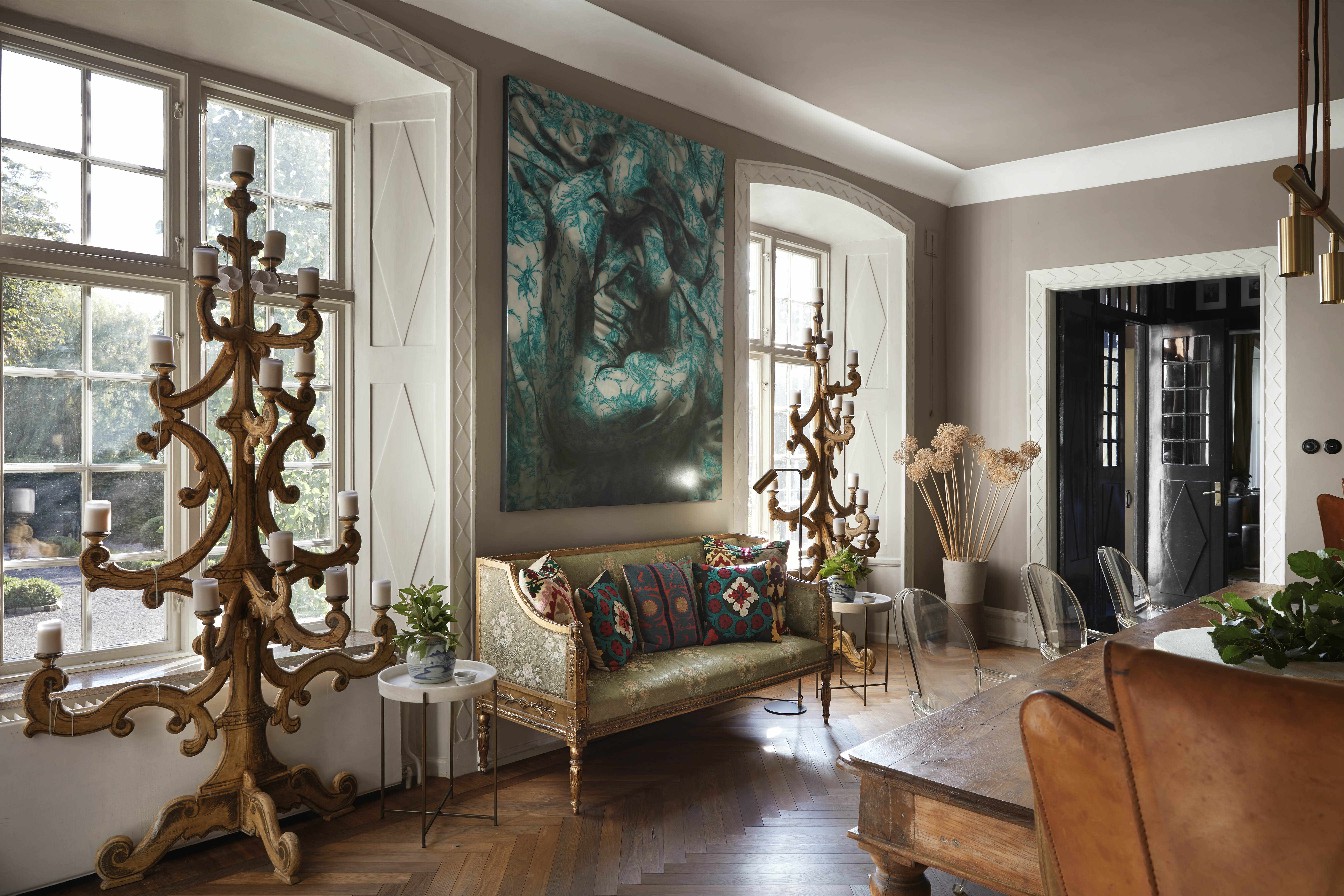
Old and new: antique furniture meets modern art
As Kåseholm’s present-day owners Joakim Silvandersson and Jamie White descend the stairs to greet us, I stand in awe of an ancient chestnut tree whose heavy boughs hang to the ground in a deep curtsy.
“It’s the oldest and largest chestnut in the Nordic countries,” says Joakim with pride. “It was planted in 1632, the same year that Kåseholm was built. The tree is so huge that the main trunk seems buried deep within the tree. Now I understand why it is said that divinity clings to the branches of the chestnut tree.”
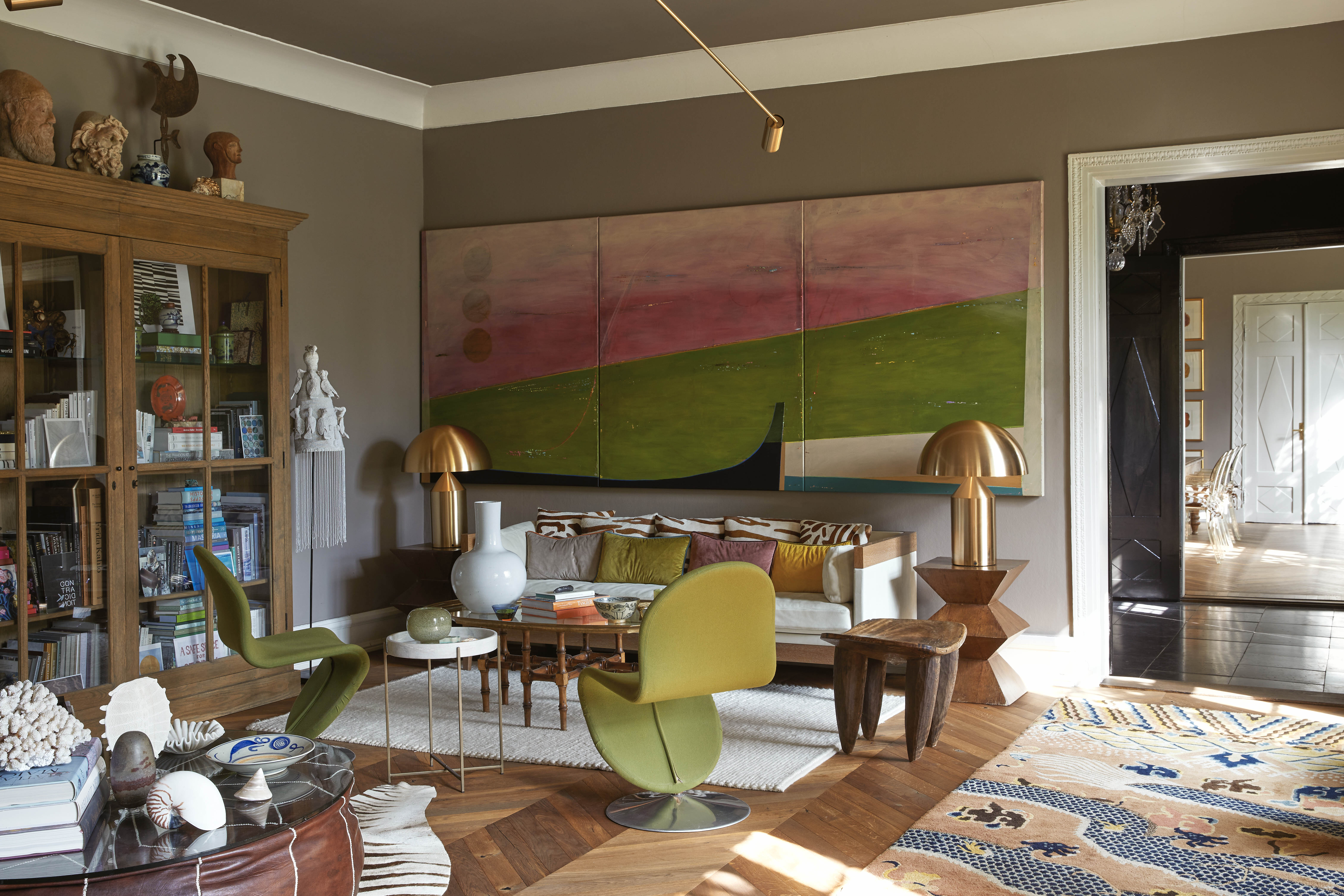
A room of one’s own: a painting by Jamie White in the sitting room
Divine intervention certainly had a hand in leading Joakim and Jamie to this historic estate in 2017. “We went online to help a friend look for a house in the area when we came across Kåseholm,” recalls Jamie. Just an hour by train from Copenhagen, the estate, comprising a 28-room main house and a plethora of outbuildings, barns and cottages, proved an irresistible prospect. They had just sold Solliden, a 60-acre eco-resort in northern California. For Joakim, who grew up in Sweden but had lived in the US for decades, Kåseholm offered the opportunity to fulfil a childhood dream of becoming a farmer – and living in a castle – while Jamie, who is from Texas and is both a lawyer and a landscape architect, with a serious gift for interiors, saw the possibility to restore a magnificent property.
A nobleman, judge and admiral who is believed to have buried his wealth somewhere on the property
There had been little in the way of major improvements to the house for a couple of hundred years, which allowed Joakim and Jamie to future-proof the U-shaped house containing a series of interleading, garden-facing public rooms. The castle, which resembles an old manor house rather than a turreted castle in the fairytale sense, had 10 bedrooms, 10 bathrooms, two kitchens, a pantry, four reception rooms, two dining rooms, two offices, an apartment and a wine cellar.
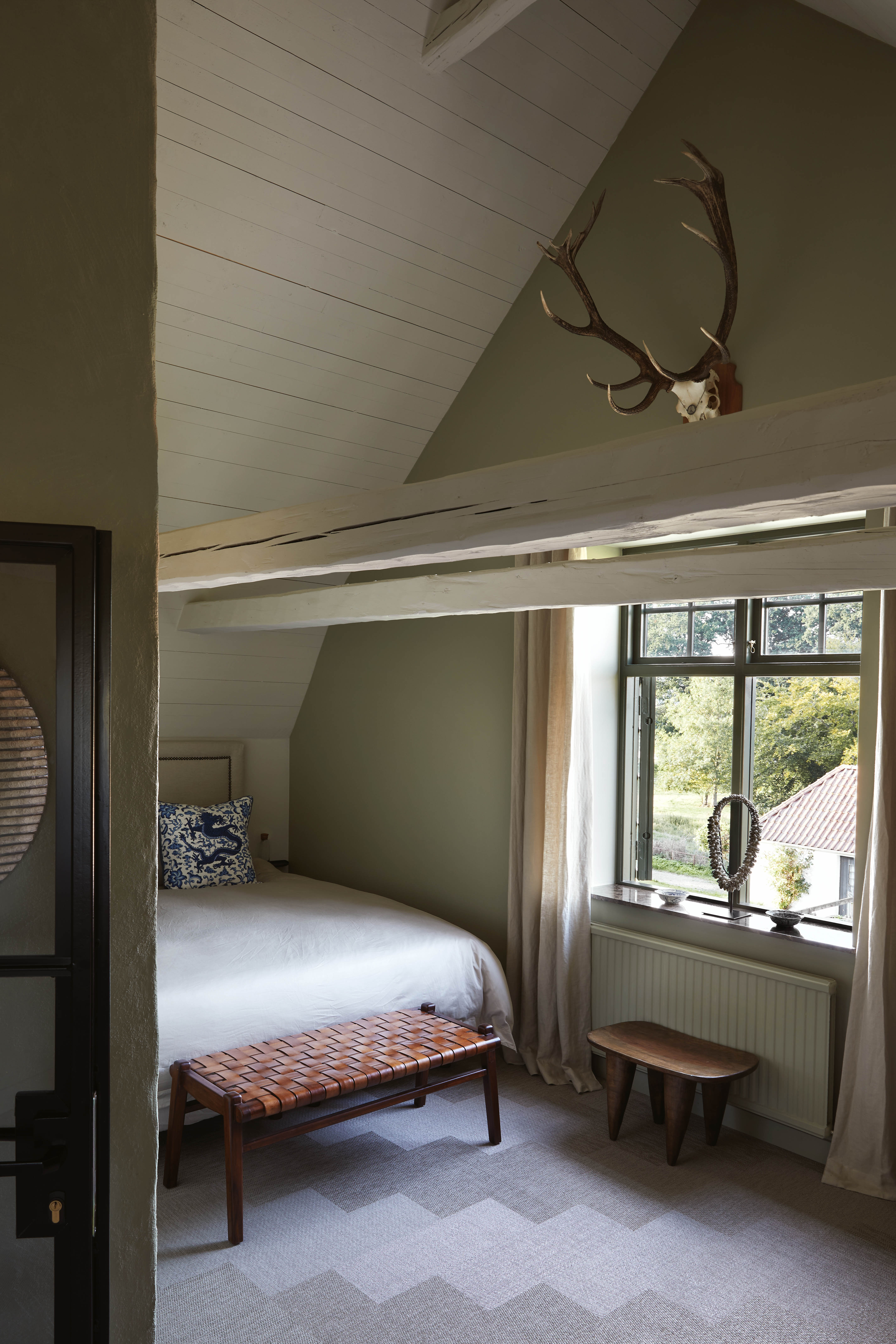
Dream on: the house has 10 bedrooms and 10 bathrooms
“Although historic buildings go through many changes over the years, at Kåseholm there seems to have been an ever-present respect for proportion, volumes and detailing,” explains Jamie. “Consequently, we feel honour-bound to respect the overall integrity of the house, too.”
Today, Kåseholm is the couple’s home, but it is also an upscale bed and breakfast, a creative hub, and location for Forum, a research and teaching initiative focused on sustainable food production and farming. Getting to this stage has been a considerable undertaking. “The first thing we did was to open the west kitchen wall to a private dining room to let afternoon light in and improve circulation,” says Jamie, “and to create a contemporary kitchen in what, historically, was a connecting corridor.”
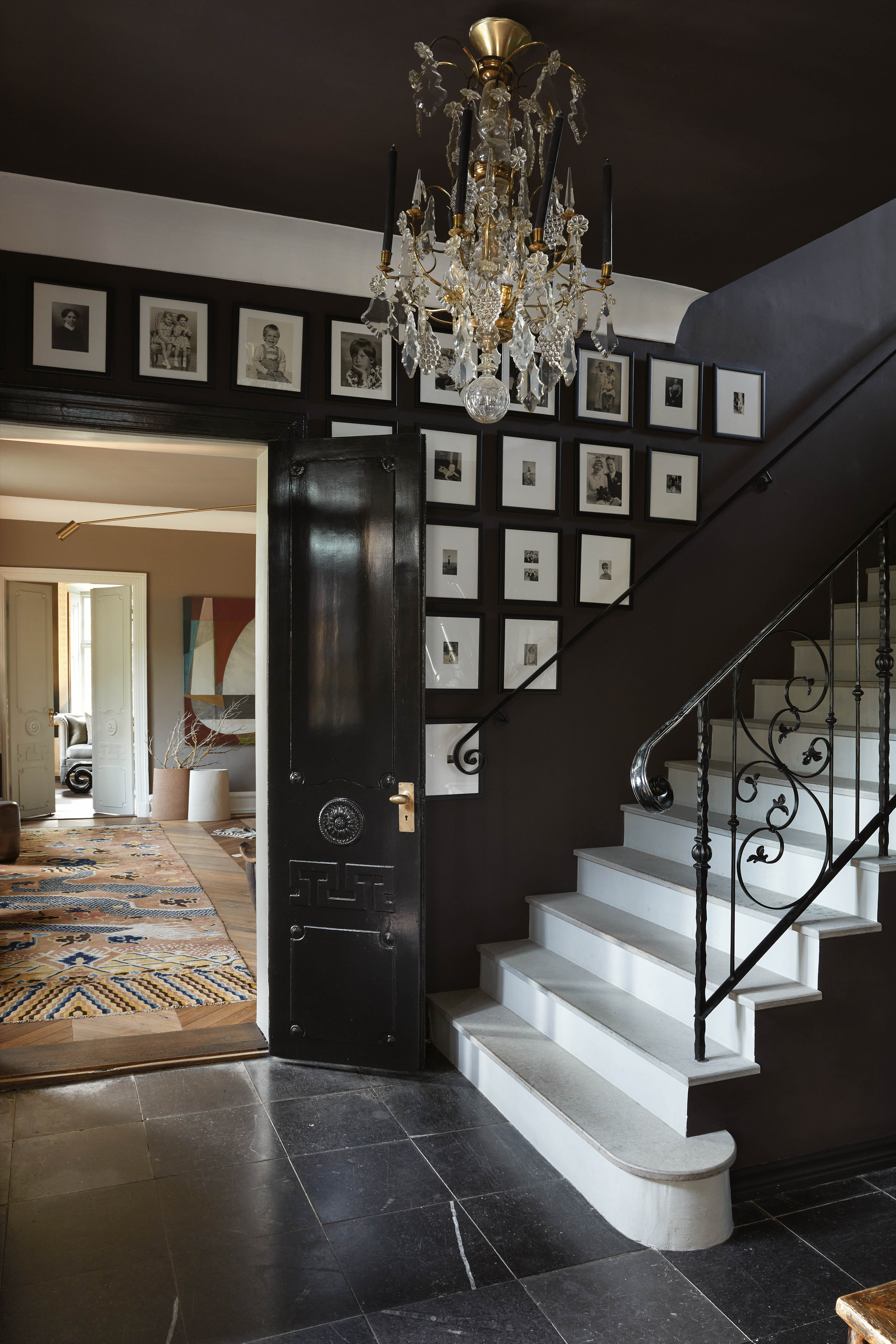
Stairway to heaven: family photographs in the dramatic entrance hall
With much of the original herringbone oak floorboards as well as exquisite harlequin carved doors, door frames and internal window shutters – not to mention the most baroque ornamental door hinges I’ve ever seen still intact – the house stands as a reminder of a time when human needs trumped business needs, a time when things were made to last, function well and feel good underfoot and pleasing to the hand and eye. It’s something Jamie and Joakim hold dear, too, judging by their carefully curated collection of European, Asian and African antiques that take their place alongside contemporary objets.
No wonder Kåseholm has evolved as a place that inspires creative outcomes. The couple’s decision to open their home to travellers, as well as to create a farm stay, an artist-in-residency programme and an international multidisciplinary design studio focused on food, art and design, was borne out of a passion for the environment and the generosity and power of community.
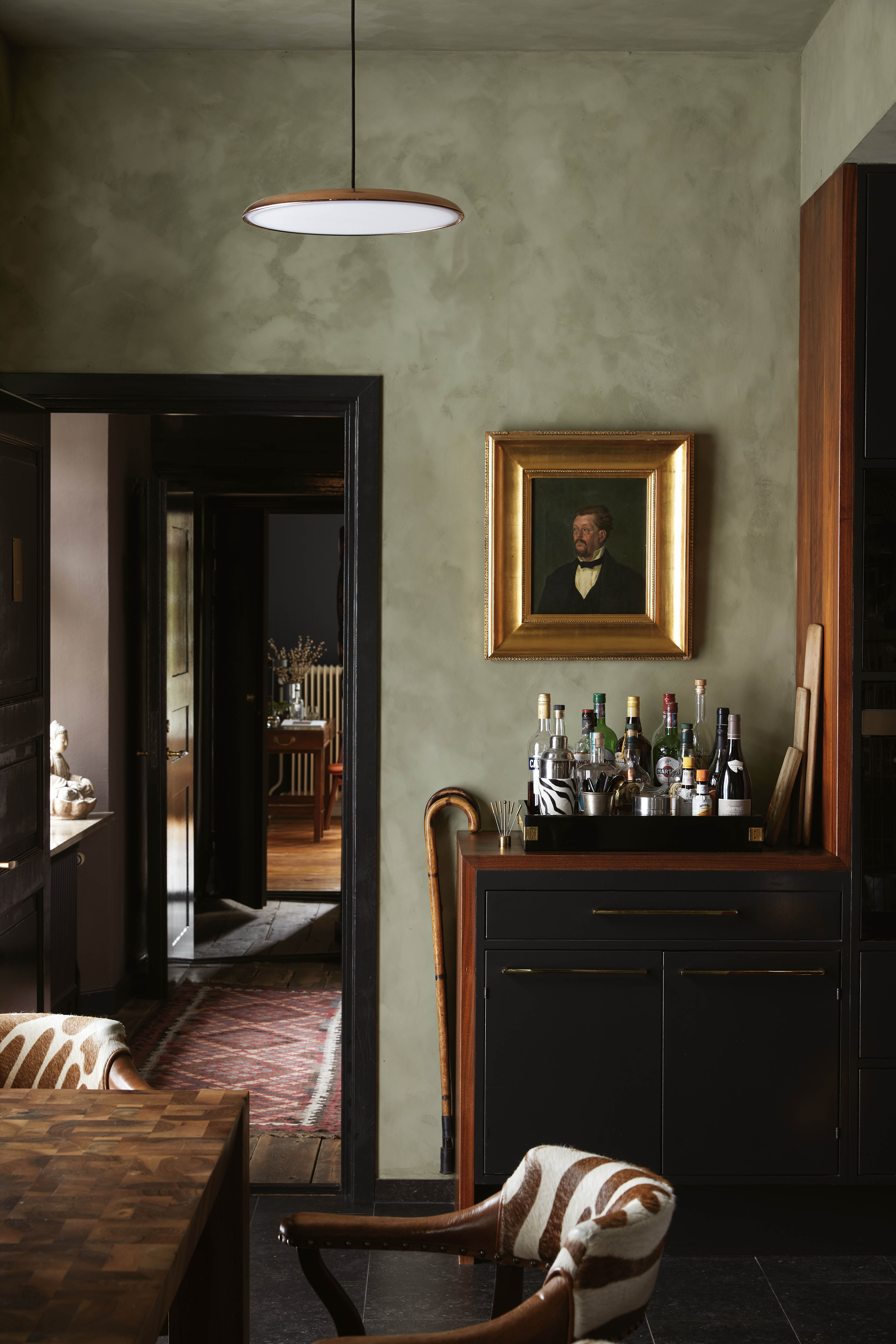
Picture this: an oil painting in golden frame over the drinks trolley
When they were living in California, the couple helped launch the first Slow Food Nation event in San Francisco, joining hundreds of other pioneering growers and thought leaders within the food system. In 2019, they made the decision to collaborate with Michelin Chef Daniel Berlin and to focus on local traditions and the telling of stories that can affect cultural influence and change in consumer food choices.
Kåseholm is no stranger to change and new directions. In the mid-17th century, this southern area of Sweden still belonged to Denmark. The house lived through some turbulent times.
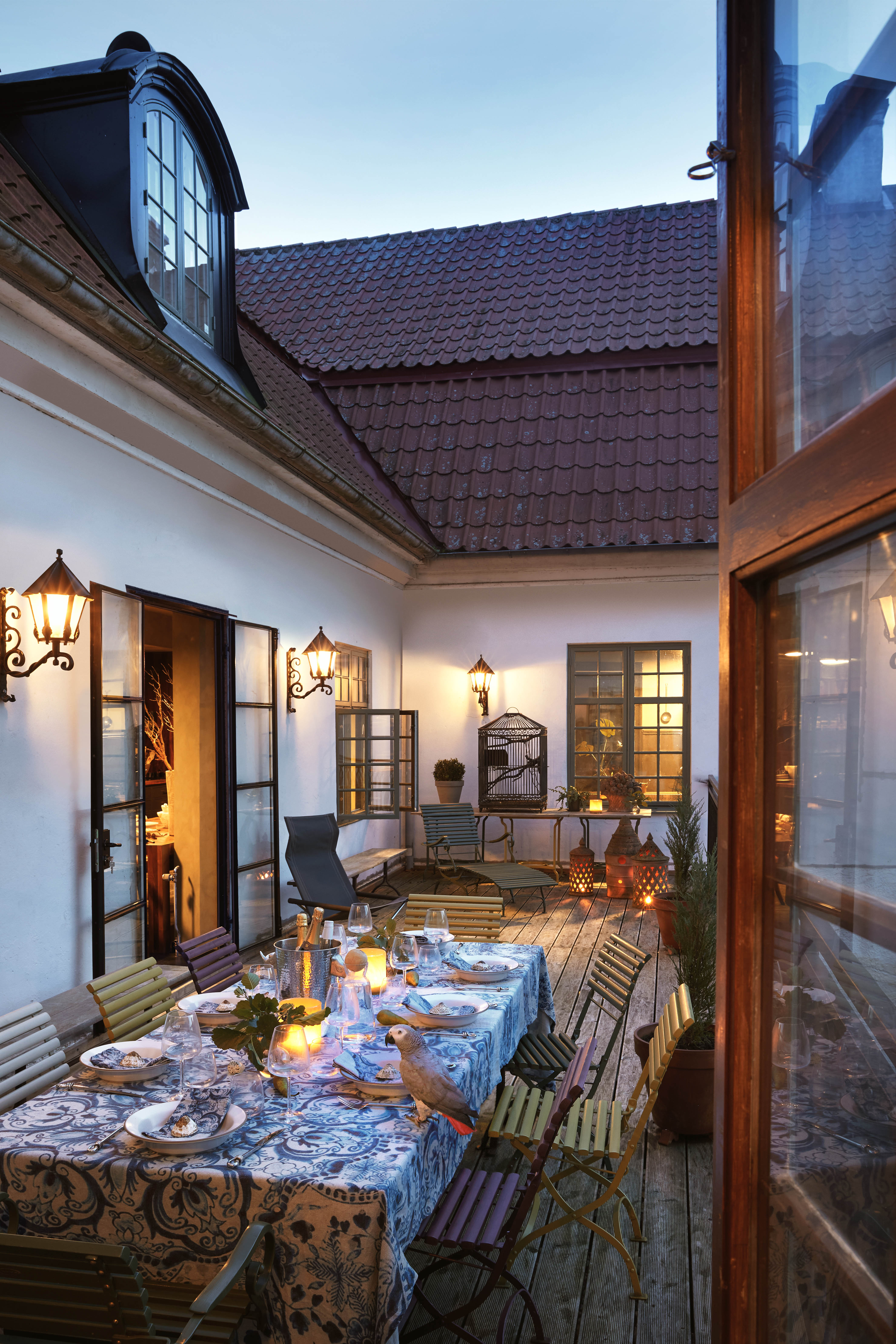
Dining out: a table set for an evening meal, with parrot as guest of honour
“There were 11 Dano-Swedish wars between 1521 and 1814 with the borders moving regularly,” explains Joakim. “Kåseholm’s owner during part of this period in history was a nobleman, judge and admiral who is believed to have buried his wealth somewhere on the property before fleeing to Småland to wait out the war.” As to where it is buried, Jamie and Joakim have yet to find out.
